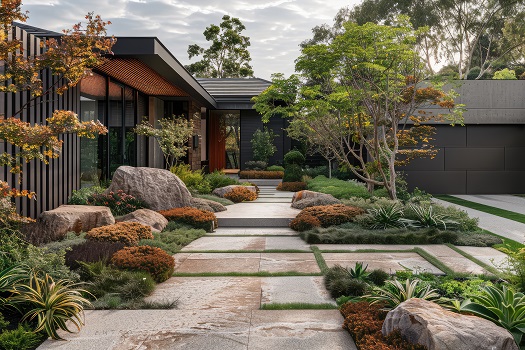Everything about Hilton Head Landscapes
Everything about Hilton Head Landscapes
Blog Article
Rumored Buzz on Hilton Head Landscapes
Table of ContentsAbout Hilton Head LandscapesThe 5-Minute Rule for Hilton Head LandscapesThe Ultimate Guide To Hilton Head LandscapesThe Best Guide To Hilton Head LandscapesLittle Known Facts About Hilton Head Landscapes.An Unbiased View of Hilton Head LandscapesSome Known Incorrect Statements About Hilton Head Landscapes
Line produces all types and patterns and can be made use of in a variety of methods the landscape. Line in the landscape is developed by the edge between 2 materials, the overview or shape of a type, or a lengthy direct attribute. Lines are a powerful device for the designer since they can be used to create a boundless selection of forms and kinds, and they manage movement of the eye and the body.

Lines in the landscape. The residential properties of lines determine just how people respond to the landscape, both psychologically and physically.
The Only Guide to Hilton Head Landscapes
Straight lines are most commonly found in hardscape edges and product. Bent lines develop an informal, all-natural, loosened up character that is linked much more with nature and unbalanced equilibrium. Bent lines move the eye at a slower rate and add mystery to the area by producing hidden views. Vertical lines move the eye up, making a space feel larger.
Upright lines in the landscape consist of high, slim plant product, such as trees, or high frameworks, such as an arbor or a bird house on a post. Horizontal lines move the eye along the ground airplane and can make a room feel larger. Reduced lines are extra subdued and create a sensation of remainder or repose.
Hilton Head Landscapes for Dummies
Lines are additionally created by the vertical types of built features and plant material. There are 3 key line kinds that create kind in the landscape: bedlines, hardscape lines, and plant lines.
Bedlines connect plant product to your home and hardscape due to the fact that the eye complies with the line, moving the look via the landscape. Hardscape lines are produced by the side of the hardscape, which delineates the constructed structure. Line can likewise be produced by long and slim products, such as a fence or wall surface.
Indicators on Hilton Head Landscapes You Should Know
Kind is discovered in both hardscape and plants, and it is typically the dominant visual component that spatially arranges the landscape and often identifies the design of the garden. The type of structures, plant beds, and garden ornaments also identifies the general kind motif of the yard. Formal, geometric forms consist of circles, squares, and polygons.
Plants produce form in the garden via their details or silhouettes, but kind can likewise be specified by a space or unfavorable area between plants - bluffton landscaping (https://www.find-us-here.com/businesses/Hilton-Head-Landscapes-Hilton-Head-Island-South-Carolina-USA/34094024/). Circles can be cycles, or they can be divided right into half circles or circle segments and incorporated with lines to produce arcs and tangents
The Single Strategy To Use For Hilton Head Landscapes
Circles are a solid design type due to the fact that the eye is always attracted to the facility, which can be utilized to stress a focal point or connect various other forms. Round forms in hardscape and yard panels.
The square type can additionally be segmented and pre-owned consistently to develop a grid pattern. Unlike circles, squares are stronger on the sides, which can be aligned or overlapped to produce unique patterns and even more intricate forms. Polygons are many-sided types with straight sides. Triangles, for instance, are three-sided polygons.
Twisting lines typically simulate the all-natural training course of rivers or streams and can be called smooth lines with deeply curved undulations. Meandering lines (Figure 3) work well for paths, plant bedlines, and completely dry stream beds. Twisting lines can include passion and mystery to a garden by leading customers around edges to uncover new sights and spaces.
Top Guidelines Of Hilton Head Landscapes

Number 5. Fragmented sides: tipping stones in path. Form is one of the most long-lasting quality of a plant (landscapers in bluffton sc). https://www.edocr.com/v/n3mz8xkl/stevenagonzales/hilton-head-landscapes. Typical plant types are well established and standard, as kind is one of the most constant and well-known quality of plants. Form can also be developed via that site the massing of plants, where the general mass develops a different kind than a specific plant.
A highly different type must be used with careone or more work well as a focal factor, however a lot of produce chaos. Natural plant kinds, as opposed to over-trimmed kinds, need to develop the mass of the structure. The relevance of total type is basically depending on the seeing perspectivethe kind of a tree can show up rather different to an individual standing under the cover versus seeing the tree from a range in an open area.
Hilton Head Landscapes Fundamentals Explained
Plant kinds additionally create and define deep space or open spaces between the plants, developing either convex or concave kinds in the gaps. High-arching tree branches commonly produce a concave open area under the branches, and a rounded cover with reduced branches fills the area to create a convex form in the open space under the tree.
.jpeg)
Report this page